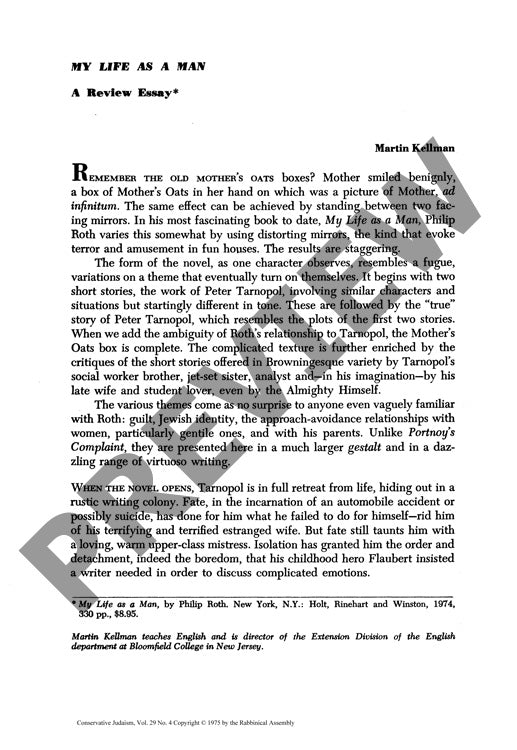My Life as a Man a Review Essay
Couldn't load pickup availability
Philip Roth's "My Life as a Man" (1974) achieves a breakthrough in Jewish-American literature through its innovative fugue-like structure, where protagonist Peter Tarnopol's fictional short stories mirror his autobiographical narrative to create recursive layers of meaning. Through literary criticism and cultural interpretation, this analysis reveals how Roth employs "distorting mirrors" - carefully crafted narrative perspectives that illuminate archetypal themes of guilt, Jewish identity, and fraught relationships with gentile women. The novel emerges at a crucial historical juncture, capturing the experience of middle-class Jewish Americans caught between their parents' Holocaust trauma and their children's Jewish renaissance. Unlike the raw catharsis of "Portnoy's Complaint," this work demonstrates Roth's artistic maturation, successfully integrating therapeutic expression with traditional Jewish irony. The resulting narrative offers a more balanced and sympathetically profound examination of character, making a significant contribution to Jewish-American literary discourse through its sophisticated manipulation of form and theme.

More Information
-
Physical Description
-
Publication Information
Published 1975
ISBN
-
Publication Credits
Martin Kellman

